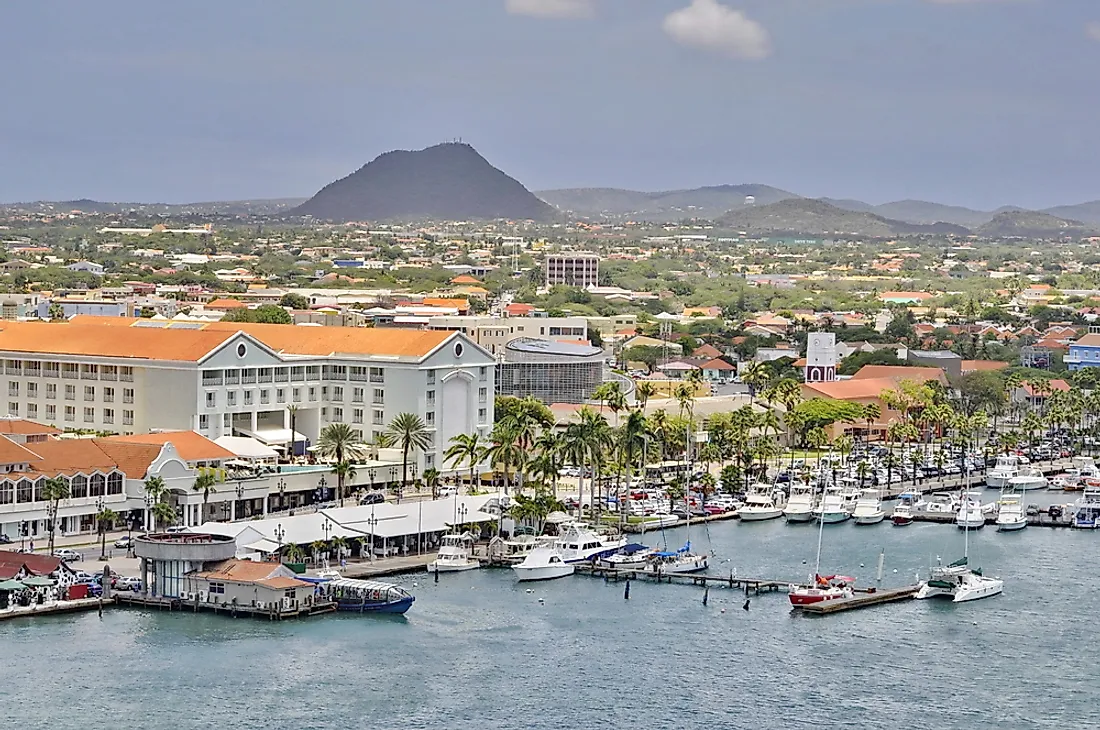What Is The Capital Of Aruba?

Oranjestad serves as the seat of government of Aruba, and it is also the country’s largest city situated on the southern coast close to the country’s western island. The population of Oranjestad was estimated at 35,000 as of 2015. The city is not only a petroleum-processing and shipping center but also a free port. It is an enclosed harbor with modern cargo-fueling and handling equipment as well as two basins. Oranjestad also comprises of a modern sports arena, brightly colored buildings, and fine residential sections. The capital city of Aruba is a popular tourist destination.
History of the Capital of Aruba
The capital city of Aruba started as a town built around Fort Zoutman in 1796. Formerly, the place was known as Paardenbaai since the town had no official name. Paardenbaai is a Dutch word that translates to ‘the town on the Bay of Horses.' The town was a place where native-bred horses were raised before being exported to the neighboring island country of Curacao. The city has been the island’s capital city ever since it was founded. Oranjestad was named after William I, the first king of the Netherlands, and the name was given to the city during the 1820s due to an increase in interest in the island following the discovery of gold deposits. The city is more to any organizations like Air Aruba, but the company suspended its operations on October 2, 2000 after filing for bankruptcy. Tiara Air also had its headquarters in the capital city from 2006 but shut off its operations from 2014 to 2016 after the company suspended services as result of the Venezuelan Airline Crisis. Tiara Air resumed its operations but was declared bankrupt on November 28th, 2016.
Tourism In Oranjestad
Tourism plays a significant role in the economy of Oranjestad. There are a few modern recreations that have emerged in the city, and they include several scattered establishments along Main Street on the main square and the outdoor shopping mall located at the Royal Plaza. One of Oranjestad’s main attractions is Fort Zoutman a military fortification which was established in 1798. At present, the fort and its tower is the island’s oldest structure, and houses the Historical Museum of Aruba. Other attractions include the Willem III Tower and the tax-free harbor found near the fort. The island of Aruba comprises of about eight museums. Close to the city lies Renaissance Island, a 16 ha reef barrier. The island is privately owned and features the only private beaches found in the country. Flamingo Beach and Iguana Beach are the beaches found on Renaissance Island. Both a Convair 400 and Beechcraft 18 were sunk deliberately almost 50 yards from the shore to create a diving site. The island also comprises of flamingoes.
Cultural Heritage Oranjestad
Small parts of Oranjestad are formed from some human-made land expansions that stretch into the sea. Some of the portions that lay within the land reclamation site include the Queen Wilhelmina Park and the adjacent present-day Renaissance Marketplace, which was initially known as Seaport Marketplace. The city features some Dutch Colonial architecture. The government of Aruba’s interest in maintaining the cultural heritage of the island has resulted in the transformation of several old houses and buildings in the city center into colorful restored landmarks, for instance, the lime-colored Civil Registry found in Wilhelminastraat.











